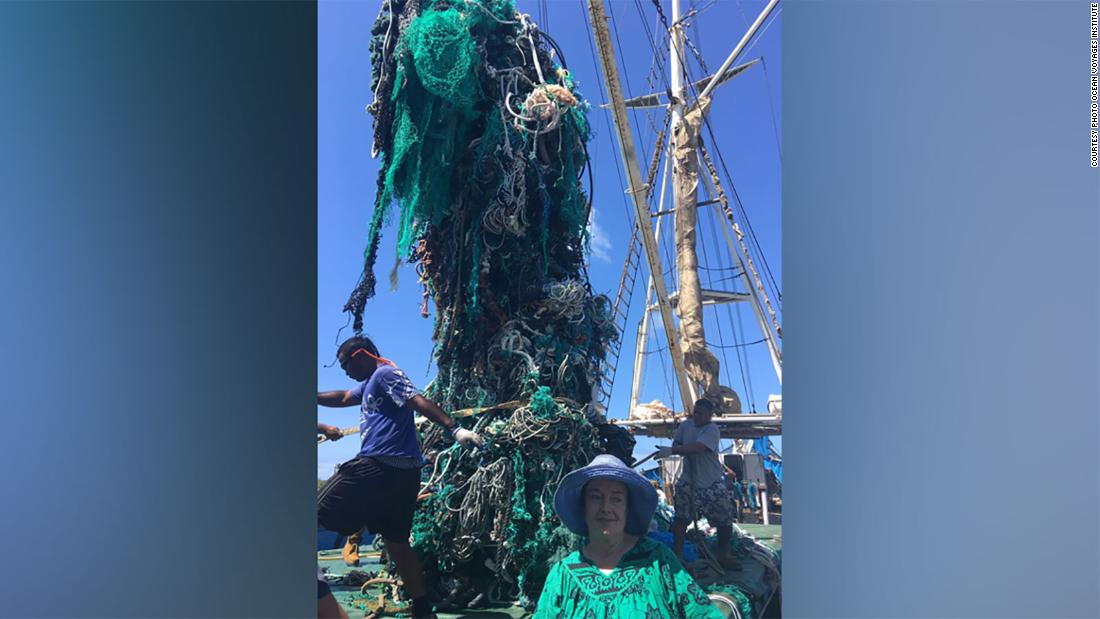[ad_1]
Ghost nets are massive fishing nets that have been left or lost at sea by fisherman.
Officials are asking people to be on the lookout for what they believe to be a net measuring 50 feet long by 70 feet wide, and approximately 50 feet deep in the sea, according to Matt Lane, a spokesman with the nonprofit Love the Sea.
Mary Crowley, founder of Ocean Voyages Institute, which conducts ocean debris cleanups, told CNN it’s difficult to know the exact size since there have been sightings from different people, but no photos.
She said when people spotting nets take photos of them, rescuers can get a more accurate estimate on sizing, which helps determine extraction efforts.
Lane said the net is believed to have a yellow floater bucket and is currently drifting through the channel. Ghost nets can be highly damaging to reef and marine life, according to Lane.
The longer it remains in the ocean, Crowley says, the more damage it will cause to marine life. A net like this could contain 15-18 tons of plastic, although rescuers won’t know for sure until it’s recovered, according to Crowley.
“If one can remove nets before it comes ashore on beaches or on reefs, it’s much more effective,” Crowley said. “Once the nets are on the reefs, removal of the net needs to be done carefully so not to damage the reefs.”
News about the net first surfaced when Oriana Kalama, founder of Ocean Defender-Hawaii, heard about the ghost net on her Marine VHF radio on December 29.
At that point, the net was reported west of Molokini, a crescent-shaped small island, popular for diving, located between Maui and the uninhabitable island of Kahoolawe. Kalama said she posted a message on Facebook to alert anyone who could help.
“It’s a moving trap,” Kalama said. “And it’s just the beginning of whale season right now, sometimes if they aren’t paying attention, they could get entangled.”
Recovery efforts have included the work of several nonprofits, including Love the Sea, Parley for the Oceans, and the Ocean Voyages Institute, as well as the Department of Land and Natural Resources, Coast Guard, and Harbor Masters and the Hawaiian Islands Humpback Whale National Marine Sanctuary.
Because of poor weather conditions in the area, rescue crews have had trouble spotting the net, Lane said. Once it is spotted, rescuers plan to tag it and recover it by boat.
With the support of local environmental organizations, a smaller ghost net was spotted and recovered on Friday, Lane said.
The location of the larger ghost net remains unknown. It is likely to have moved west from a large cyclonic eddy formed southwest of Maui, Nikolai Maximenko from the International Pacific Research Center said in a press release.
“In reality, strong turbulence, induced by wind gusts and tides should dissipate energy of currents,” he said. “Because of that, the net is more likely still somewhere between Maui, Kahoolawe, Lanai, and Molokai. Possibly it’s already stuck on one of these islands.”
[ad_2]
Source link




